
Our Whakairo
In 2019, seven whakairo (carvings) were installed at Te Kura Kōhine o Ahuriri to inspire our students to learn from their ancestors and the rich history of Te Matau-a-Māui.
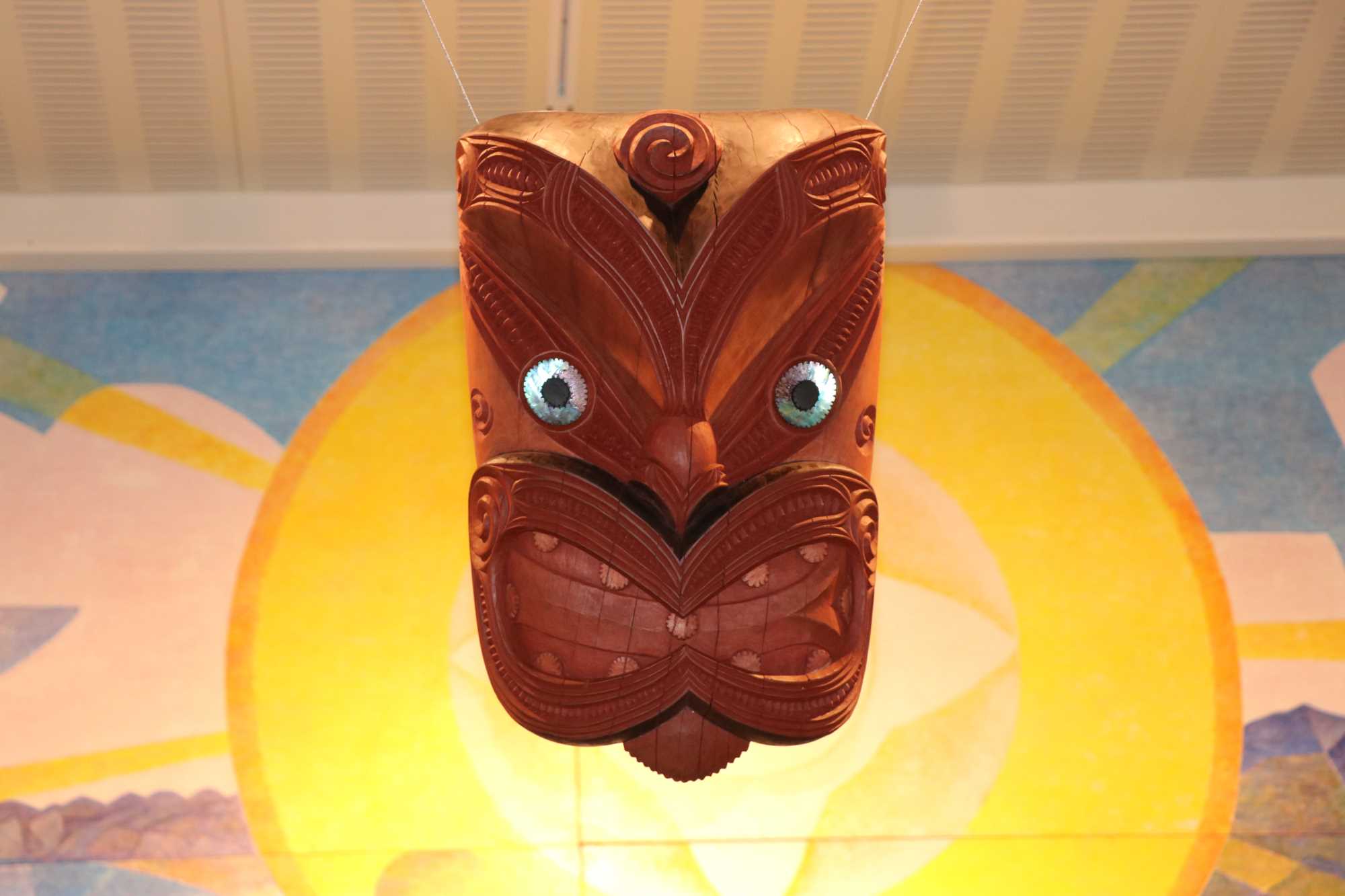
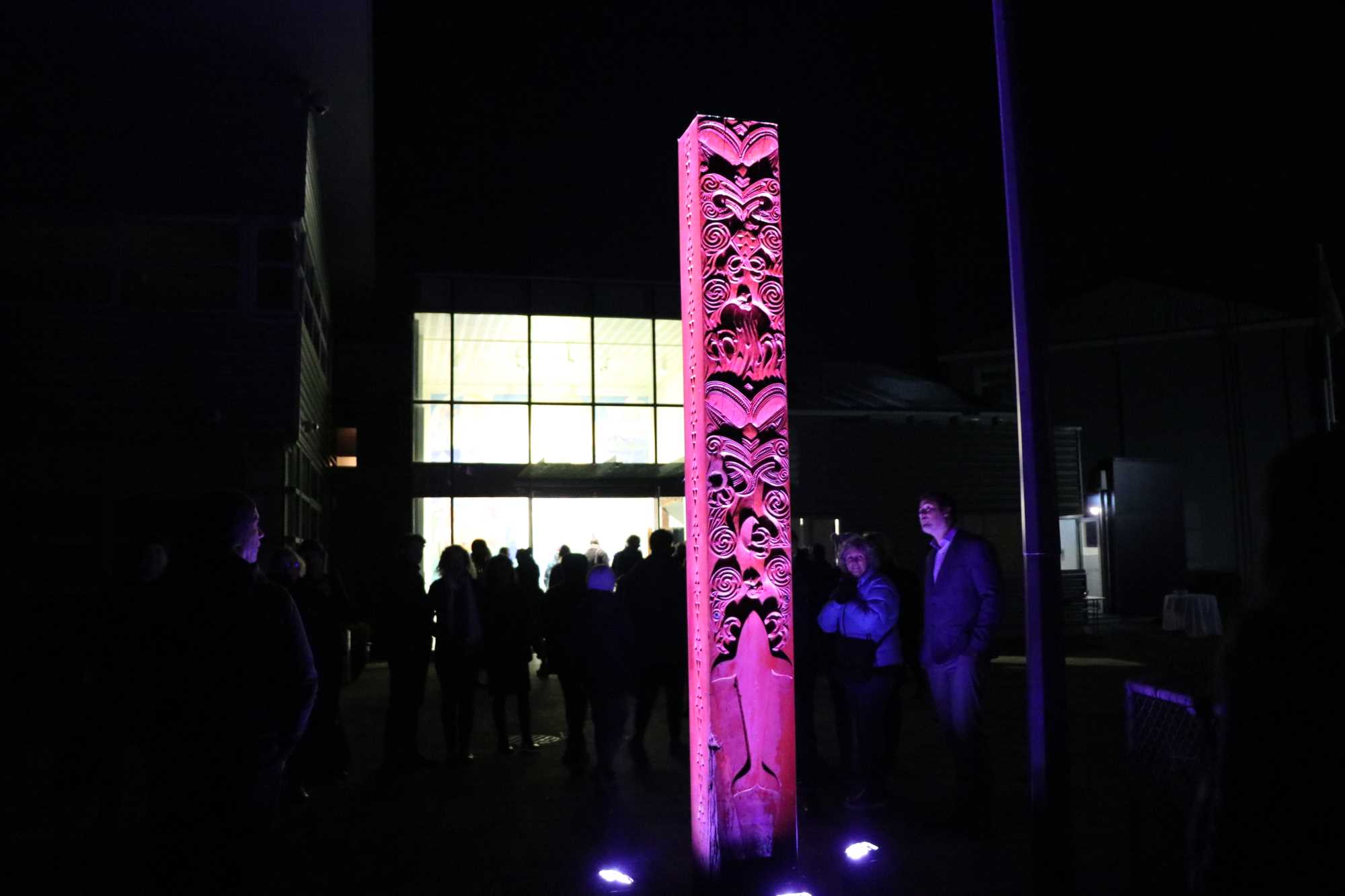
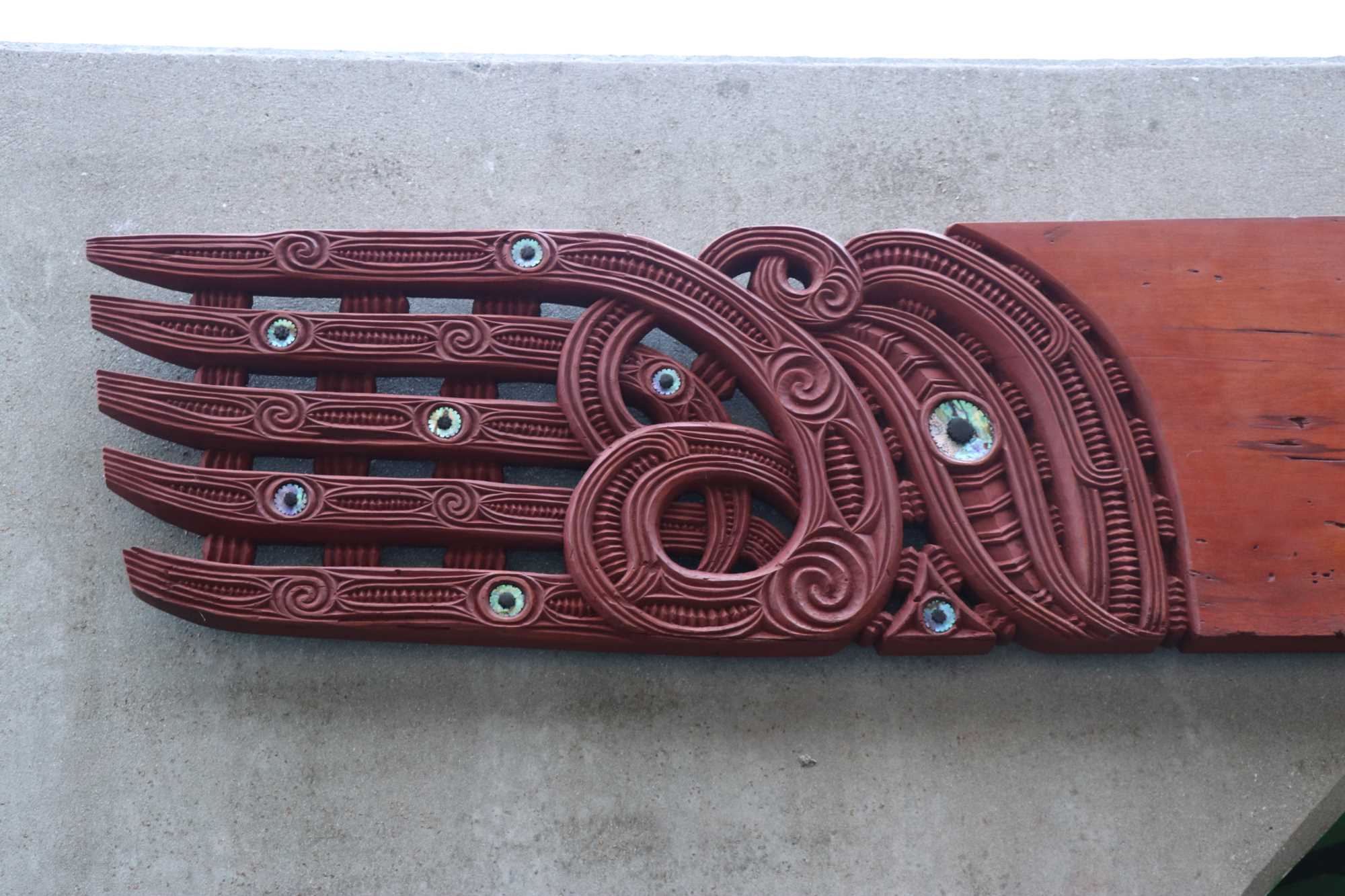
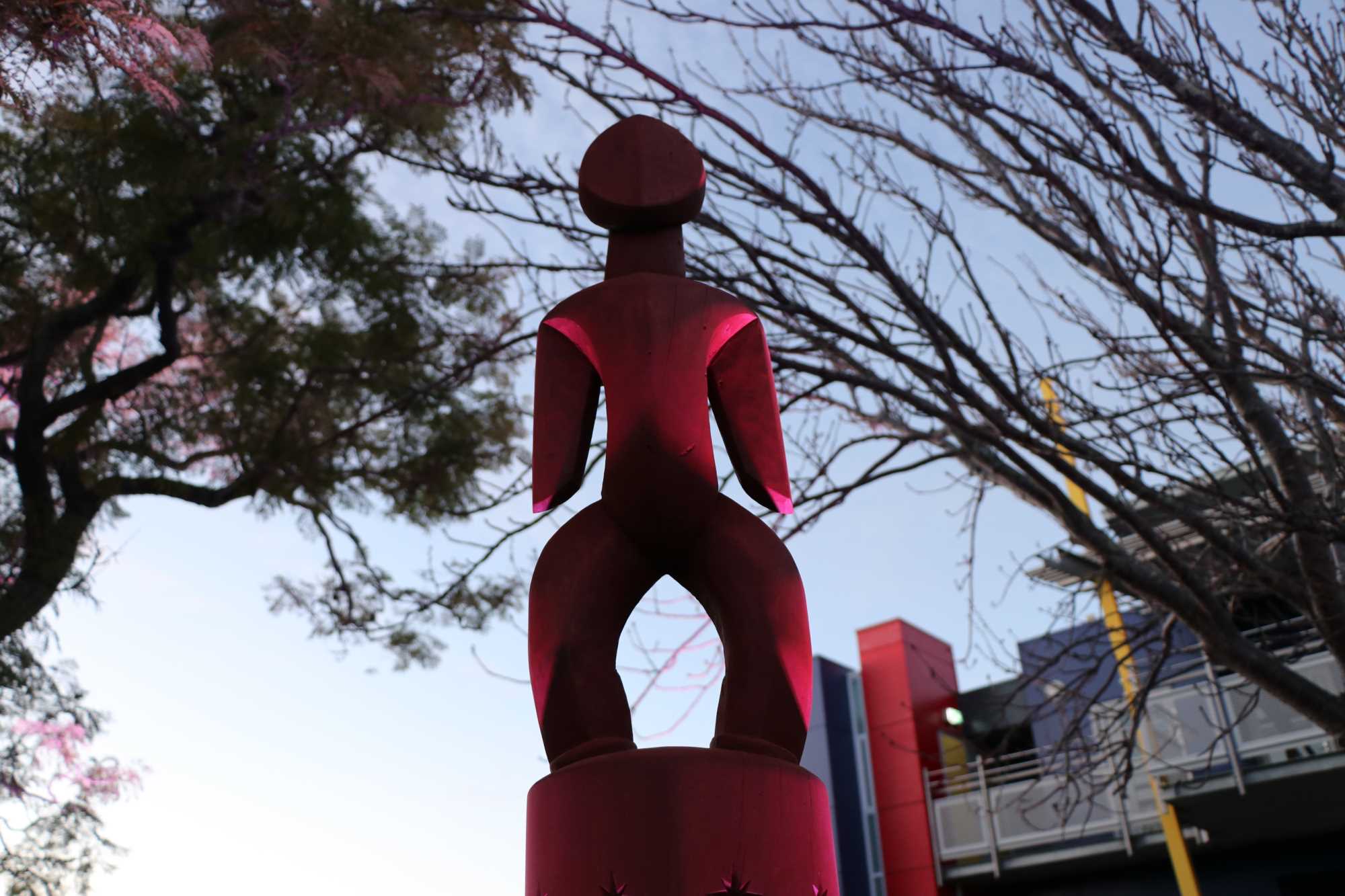
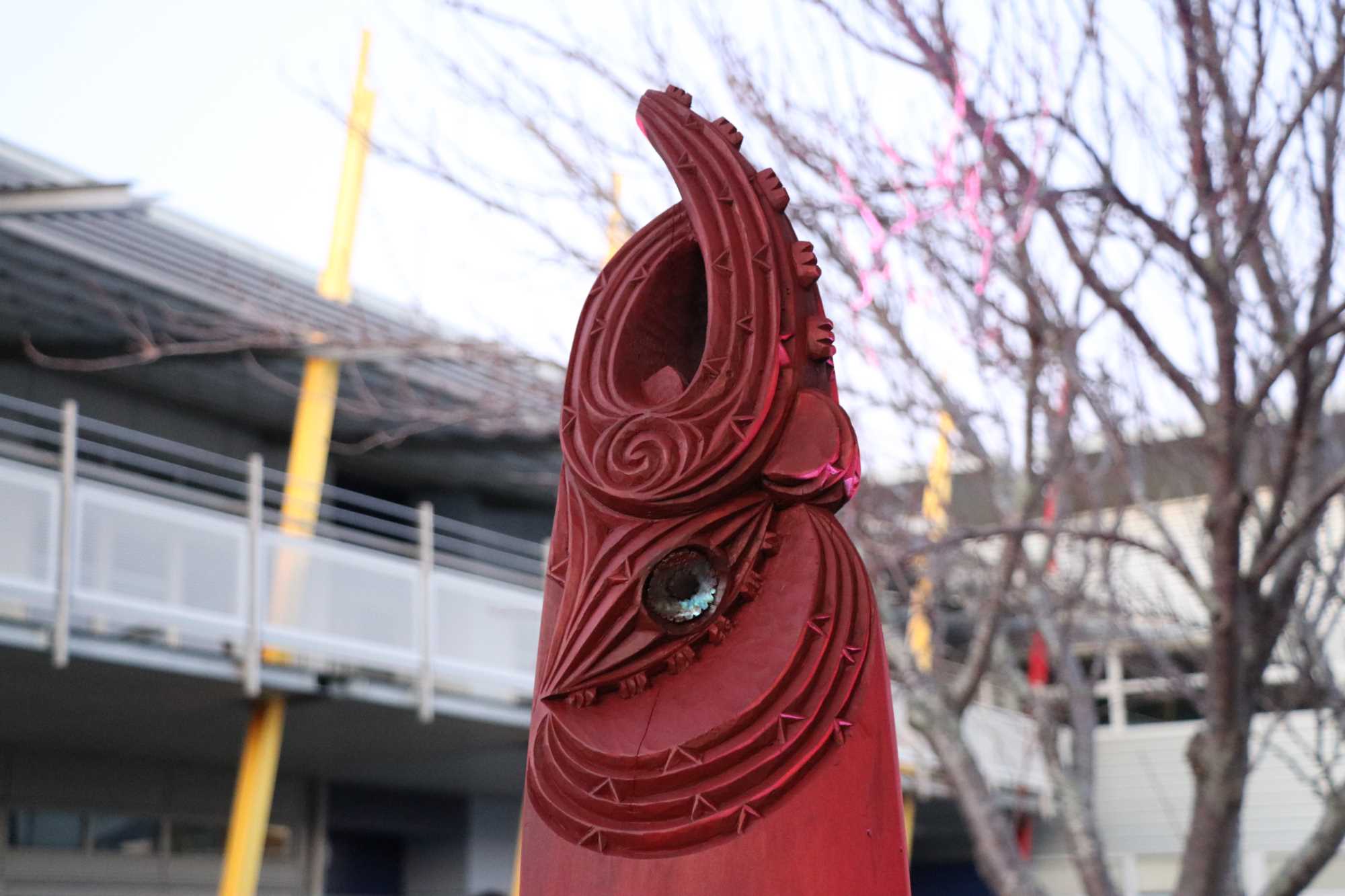
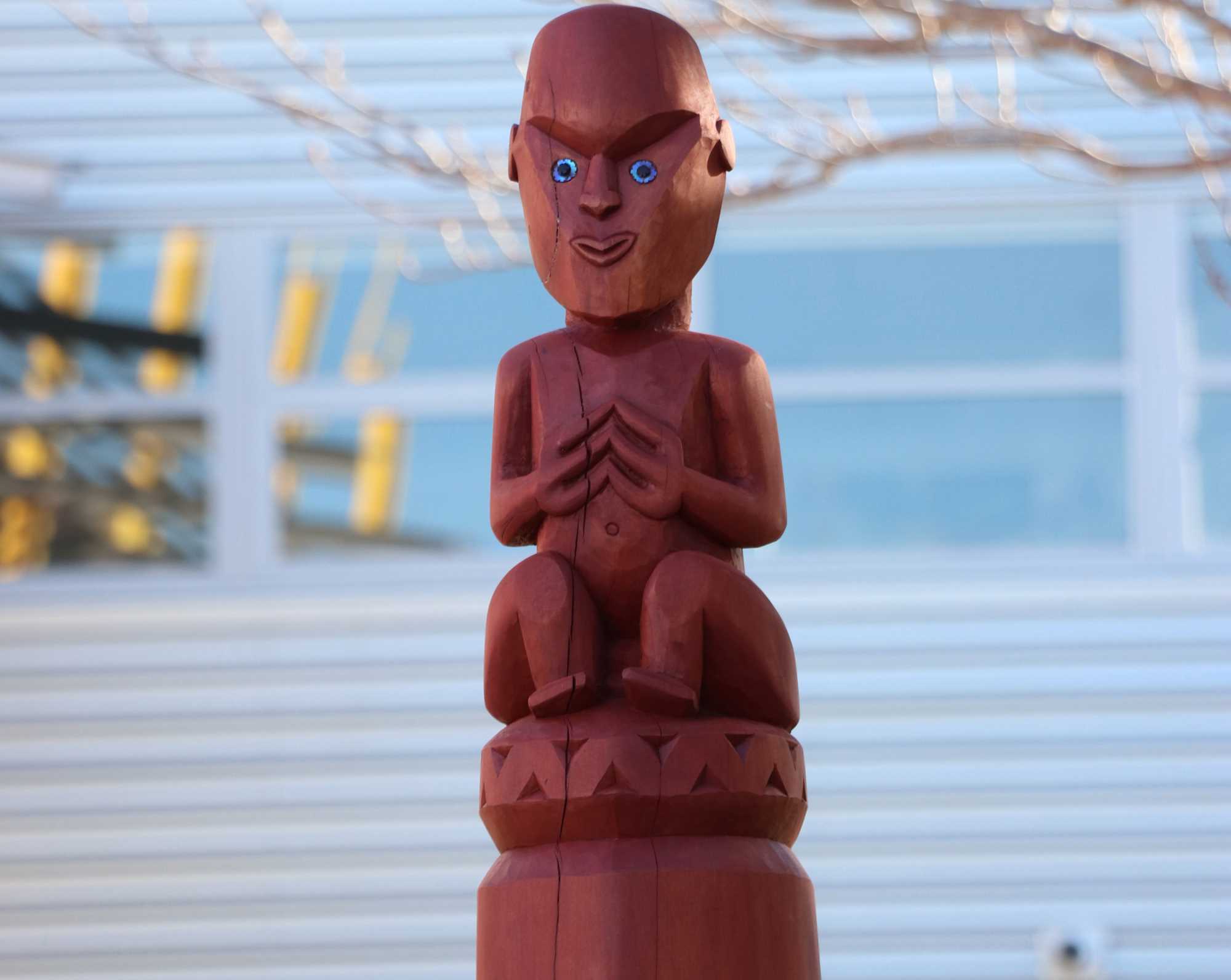
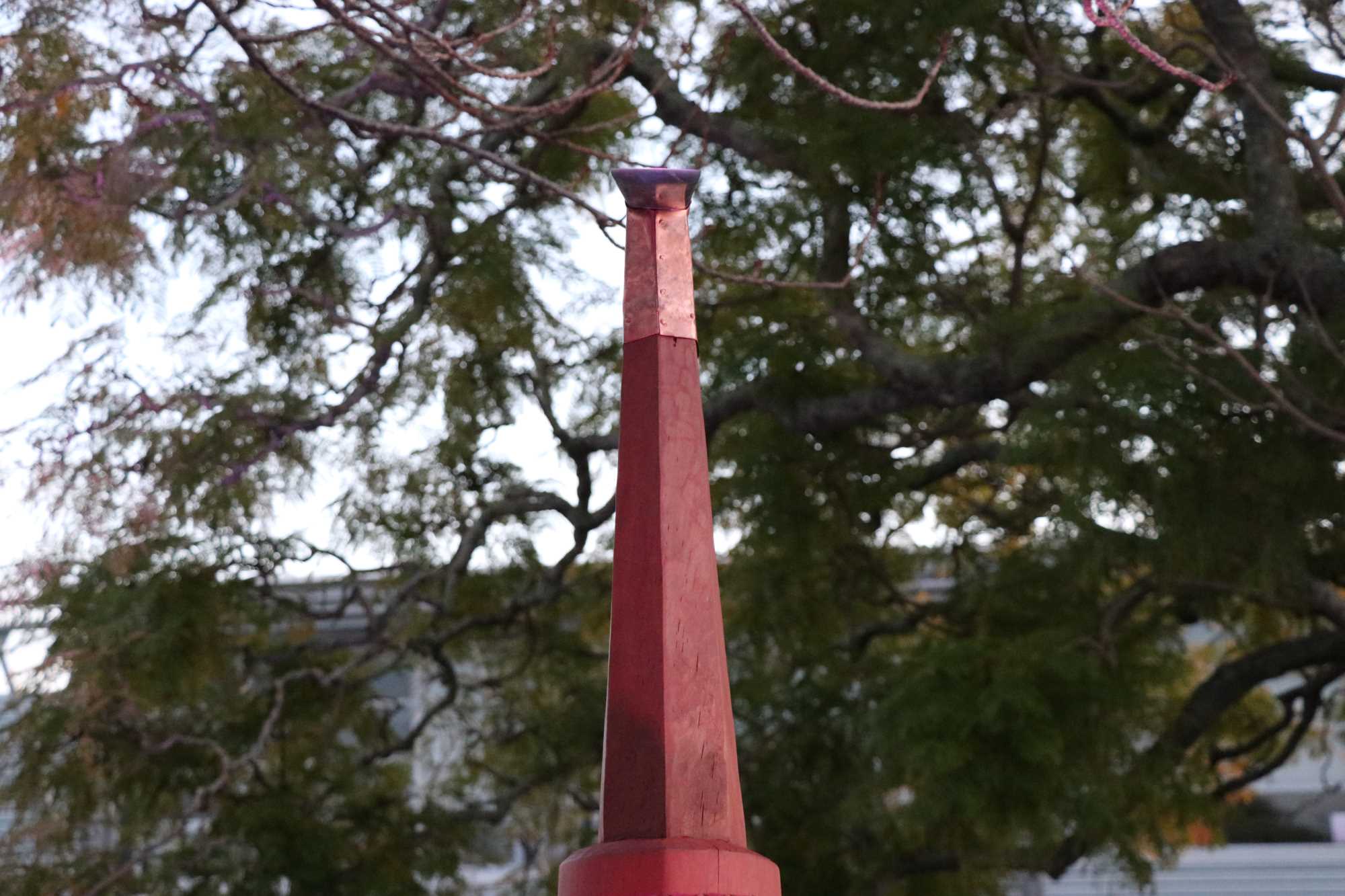
1. Tāne-nui-a-rangi
Like the words of the school haka, ‘tēnei au, tēnei au,’ this whakairo states ‘here we are,’ ‘this is what we represent.’ This whakairo is a koruru. A koruru is the face of the whare. Here it represents the ‘Rangatira o āpōpō’ - the students who are the leaders of tomorrow. The face is the atua Tāne. It is he who sought the baskets of knowledge. Upon returning to Earth with the baskets, he created humankind. Today it represents a journey of striving for knowledge and enlightenment, to become better people, ‘Ki te whai-ao, ki te ao mārama, tīhei mauri ora!’ Come forth into the dawn, into the world of light, there is life!
2. Mataruahou ki te Moana
This whakairo recognises mana whenua and mana moana (place based, social-cultural awareness and knowledge of the whenua or land we come from). It acknowledges Pania, Karitoki and Moremore, a widely known story of love and betrayal played out on the eastern side of Napier Hill and its banks. It also acknowledges the progenitors of Ahuriri and its wider region, Orotu and Tunui who are just as important.
3. Te Awhipono o Rūaumoko
This whakairo provides a link back to the gods. Rūaumoko is the unborn child of Papatūānuku. 'Awhi' means embrace and 'pono' means genuine, therefore the carving depicts the arm of Rūaumoko protecting those that use the underpass, entering and exiting his domain safely. He is also the atua of earthquakes and volcanoes. Rūaumoko is sometimes set in the back of a whare. He is responsible for maintaining tikanga, kawa and mauri. These are referring to the roles and responsibilities of the school staff and students.
NOTE: The following four pou are named after four waka that are important to our region:
4. Nukutaimemeha
This is the name of Māui’s waka. It is said to reside on Hikurangi maunga on the East Coast. Māui connects us with the rest of Polynesia. Ahuriri resides within Te Matau a-Māui, ‘Māui’s Hook.’ He possesses many qualities such as intelligence, dexterity, pragmatism, creativity and a bit of cheekiness. These are to be admired.
5. Matahourua
This is the name of Kupe’s waka. His wife Kuramārōtini, was responsible for naming Aotearoa as this is what was seen when voyaging here, a long white cloud which would indicate a large land-mass. There are many place names around the country connected to Kupe. He is reported to have landed at Nukutaurua, in Te Mahia. His descendants lived on both sides of Cape Kidnappers.
6. Kurahaupō
This is the name of a waka that landed in Nukutaurua at Te Mahia. The navigator Whātonga, grandson of well known Toi-Kairākau, married Hotuwaipara. They settled in Te Awanga naming the area which is now referred to as the Heretaunga plains. The word Heretaunga originates from Polynesia meaning a resting place for waka.
7. Te Hononga Mareikura o te waka Takitimu
“He waka tipua, he waka atua, te waka Takitimu e”. Takitimu was a sacred and an awe-inspiring canoe. It is estimated to have been built in 1060. The canoe’s name changed eight times as it made its way through the Pacific before leaving its final departure point in Rarotonga. Ko Ruawharo te tohunga, ko Tamatea Arikinui te tangata. Ruawharo was the navigator and Tamatea Arikinui was the captain. The name of this carving as described by the kaiwhakairo (carver) Piripi Belcher, is ‘a very chiefly way to acknowledge the female tīpuna [the wahine ariki],’ ultimately connected to Takitimu and their descendants. The toki or adze that sits on top of this pou was used in carving all of the school's taonga. Its brother remains with the carver. The toki’s presence is not only in recognition of its deeds but to the tīpuna whose skills of craftsmanship and navigation are merely matched today.
Napier Girls' High School
______
Clyde Road, Bluff Hill, Napier 4110
Office Phone: +64 6 835 1069 Office Email: nghs@nghs.school.nz
Office hours are: 8.00am to 4.00pm
 Admin Login
Admin Login